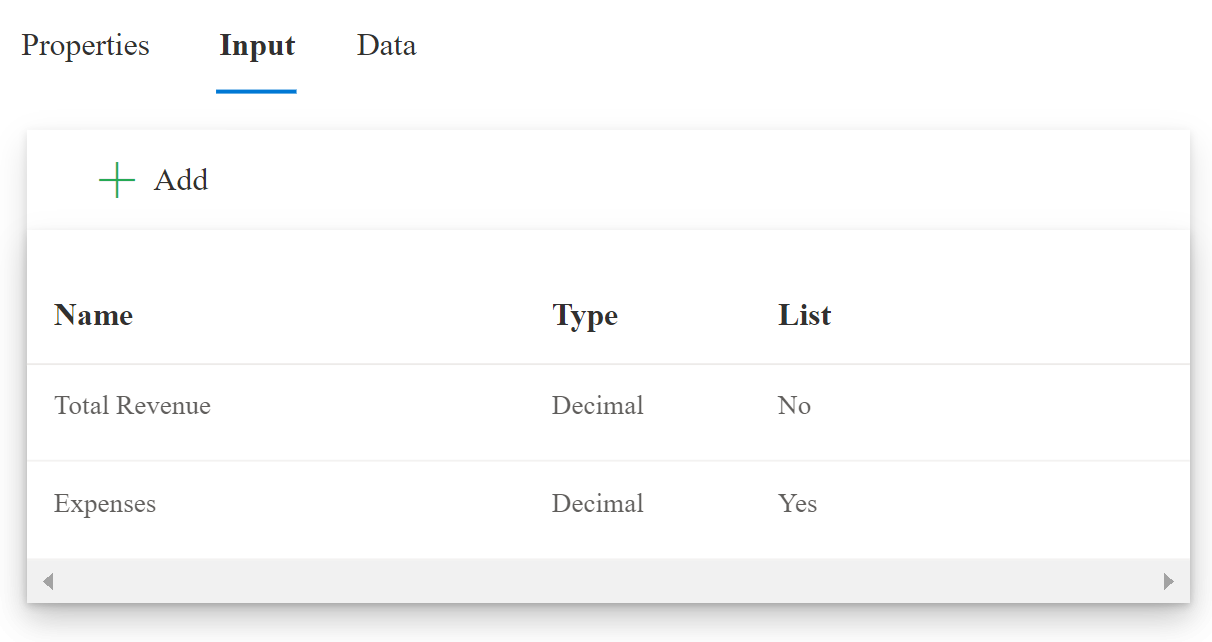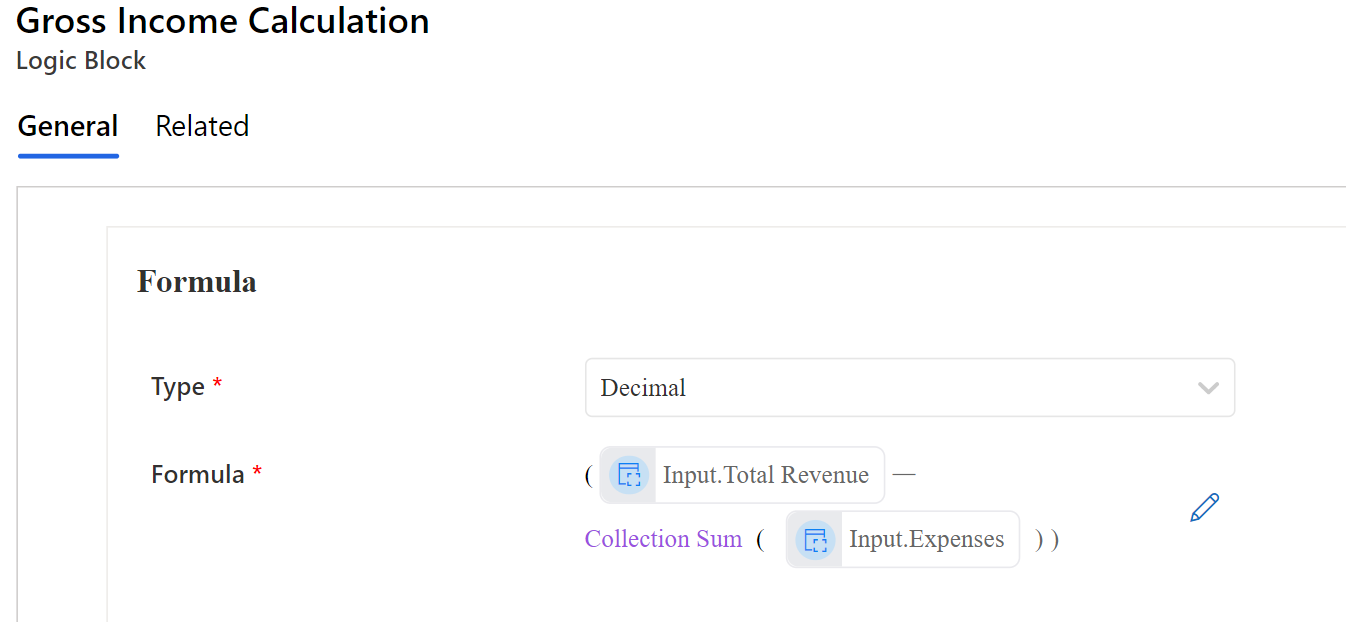Net Profit Formula
Step 1: Setting the Properties for the Logic Block
When crafting a formula-based logic block, begin by entering the essential properties:

- Name: A distinct label that serves as the block's identifier.
- Type: Choose 'Formula' from the available logic block categories.
- Project: Designate the project associated with this block.
- Description: A concise yet informative summary detailing the block's precise function.
- Is Action: A boolean indicator determining if the block is designated as an action.
- Return type: Choose one of the supported return types in formulas (Integer, Decimal, Date, Boolean, Money, String, Float...)
Step 2: Adding the formula required inputs
Having established the formula and its foundational properties, it's now pivotal to introduce the specific inputs that the formula leverages to compute the net profit:

- Total Revenue: A decimal field capturing the company's complete revenue stream.
- Expenses: A decimal list encompassing the various outlays the company incurs.
Step 3: Building the Net Profit Expression
Once we have our needed inputs, we can set up the formula to find out the net profit. We simply take away the total of all expenses from the total revenue. For this, we'll use two handy functions:
- Substract: Returns the result of subtracting two numbers
- Collection Sum: Provides the cumulative total of elements within the expenses list.
